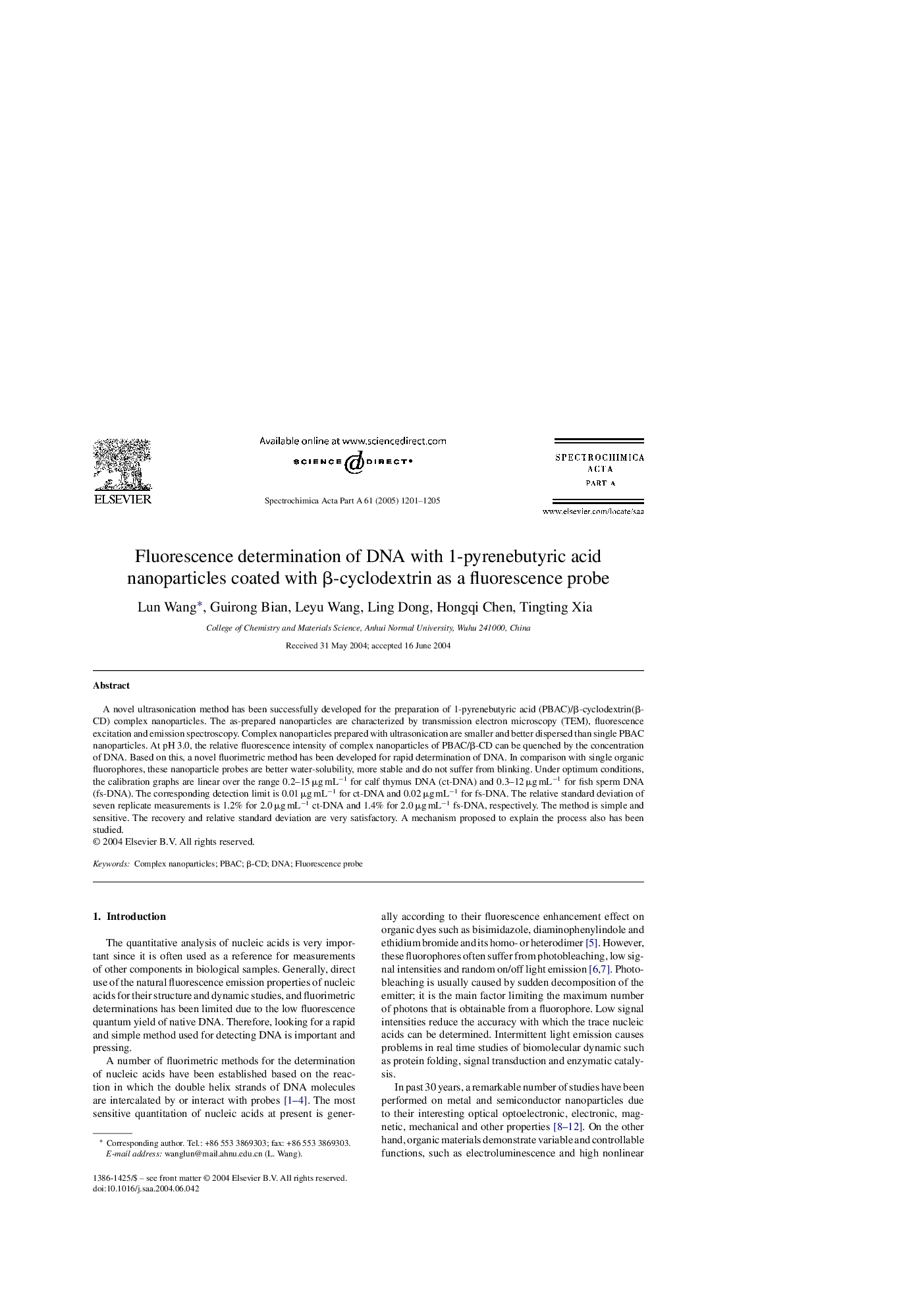| Article ID | Journal | Published Year | Pages | File Type |
|---|---|---|---|---|
| 10557410 | Spectrochimica Acta Part A: Molecular and Biomolecular Spectroscopy | 2005 | 5 Pages |
Abstract
A novel ultrasonication method has been successfully developed for the preparation of 1-pyrenebutyric acid (PBAC)/β-cyclodextrin(β-CD) complex nanoparticles. The as-prepared nanoparticles are characterized by transmission electron microscopy (TEM), fluorescence excitation and emission spectroscopy. Complex nanoparticles prepared with ultrasonication are smaller and better dispersed than single PBAC nanoparticles. At pH 3.0, the relative fluorescence intensity of complex nanoparticles of PBAC/β-CD can be quenched by the concentration of DNA. Based on this, a novel fluorimetric method has been developed for rapid determination of DNA. In comparison with single organic fluorophores, these nanoparticle probes are better water-solubility, more stable and do not suffer from blinking. Under optimum conditions, the calibration graphs are linear over the range 0.2-15 μg mLâ1 for calf thymus DNA (ct-DNA) and 0.3-12 μg mLâ1 for fish sperm DNA (fs-DNA). The corresponding detection limit is 0.01 μg mLâ1 for ct-DNA and 0.02 μg mLâ1 for fs-DNA. The relative standard deviation of seven replicate measurements is 1.2% for 2.0 μg mLâ1 ct-DNA and 1.4% for 2.0 μg mLâ1 fs-DNA, respectively. The method is simple and sensitive. The recovery and relative standard deviation are very satisfactory. A mechanism proposed to explain the process also has been studied.
Related Topics
Physical Sciences and Engineering
Chemistry
Analytical Chemistry
Authors
Lun Wang, Guirong Bian, Leyu Wang, Ling Dong, Hongqi Chen, Tingting Xia,
